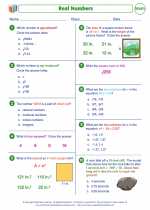Complementary Angles
Complementary angles are two angles that add up to 90 degrees. In other words, when you add the measures of two complementary angles together, the sum is always 90 degrees.
Properties of Complementary Angles:
- Complementary angles are always acute angles (i.e., angles that are less than 90 degrees).
- Complementary angles can be adjacent (sharing a common vertex and side) or non-adjacent.
- When two angles are complementary, one angle is the complement of the other.
Examples:
Example 1: If one angle measures 30 degrees, what is the measure of its complement?
To find the complement of an angle, subtract the measure of the given angle from 90 degrees:
Complement = 90° - 30° = 60°
Therefore, the complement of an angle measuring 30 degrees is 60 degrees.
Example 2: Find the measures of two complementary angles if one angle measures 45 degrees.
Since the sum of two complementary angles is 90 degrees, we can find the measure of the second angle using the following equation:
x + 45° = 90°
x = 90° - 45°
x = 45°
So, the measures of the two complementary angles are 45 degrees and 45 degrees.
Study Guide:
When studying complementary angles, it's important to remember the following key points:
- Complementary angles add up to 90 degrees.
- Complementary angles are always acute.
- When finding the complement of an angle, subtract its measure from 90 degrees.
- When given one angle, you can find the measure of its complement by subtracting from 90 degrees.
Practice identifying and finding the measures of complementary angles to solidify your understanding of this concept.
[Complementary Angles] Related Worksheets and Study Guides:
.◂Math Worksheets and Study Guides Eighth Grade. Real numbers

 Worksheet/Answer key
Worksheet/Answer key
 Worksheet/Answer key
Worksheet/Answer key
 Worksheet/Answer key
Worksheet/Answer key
 Worksheet/Answer key
Worksheet/Answer key
